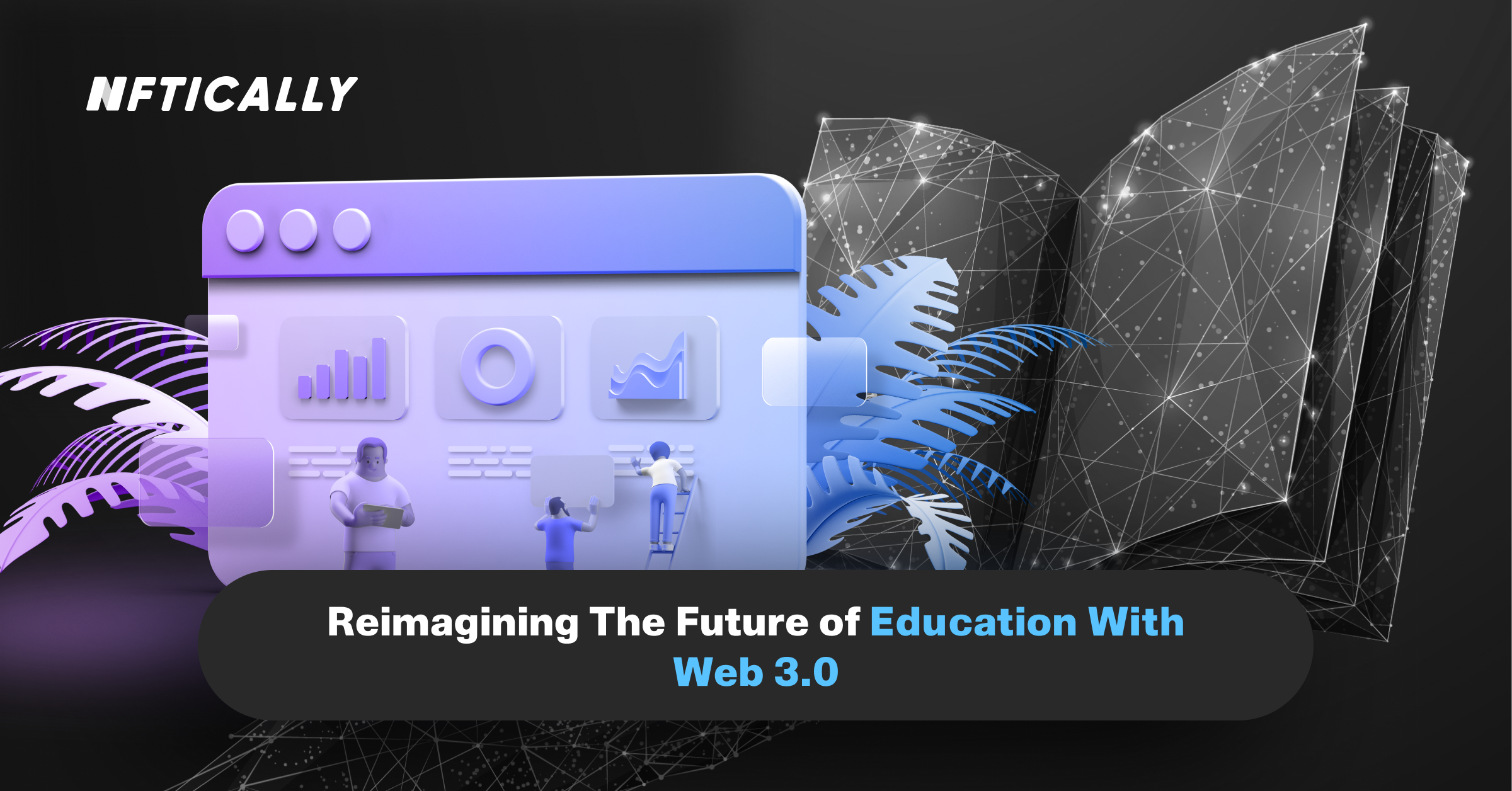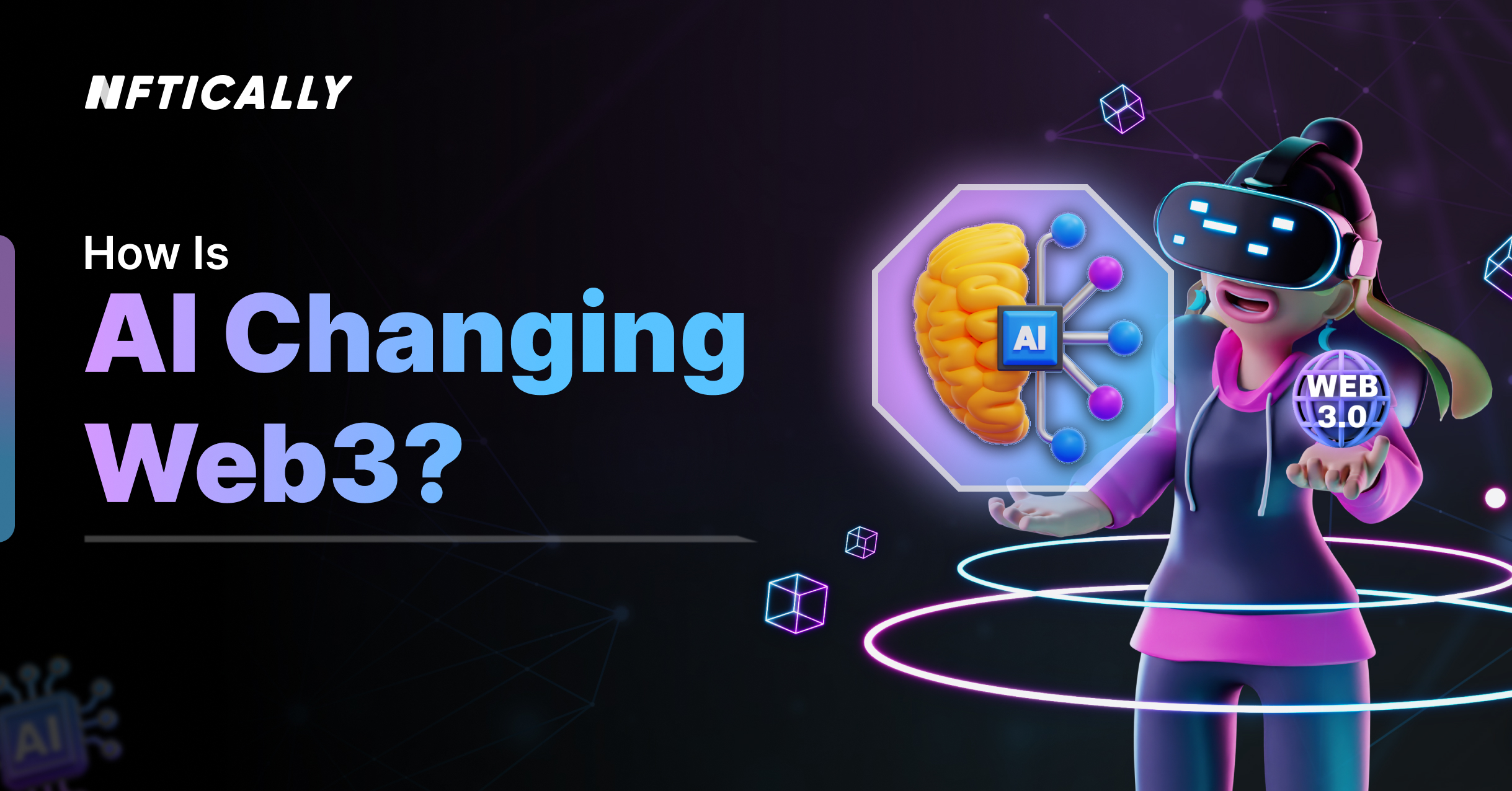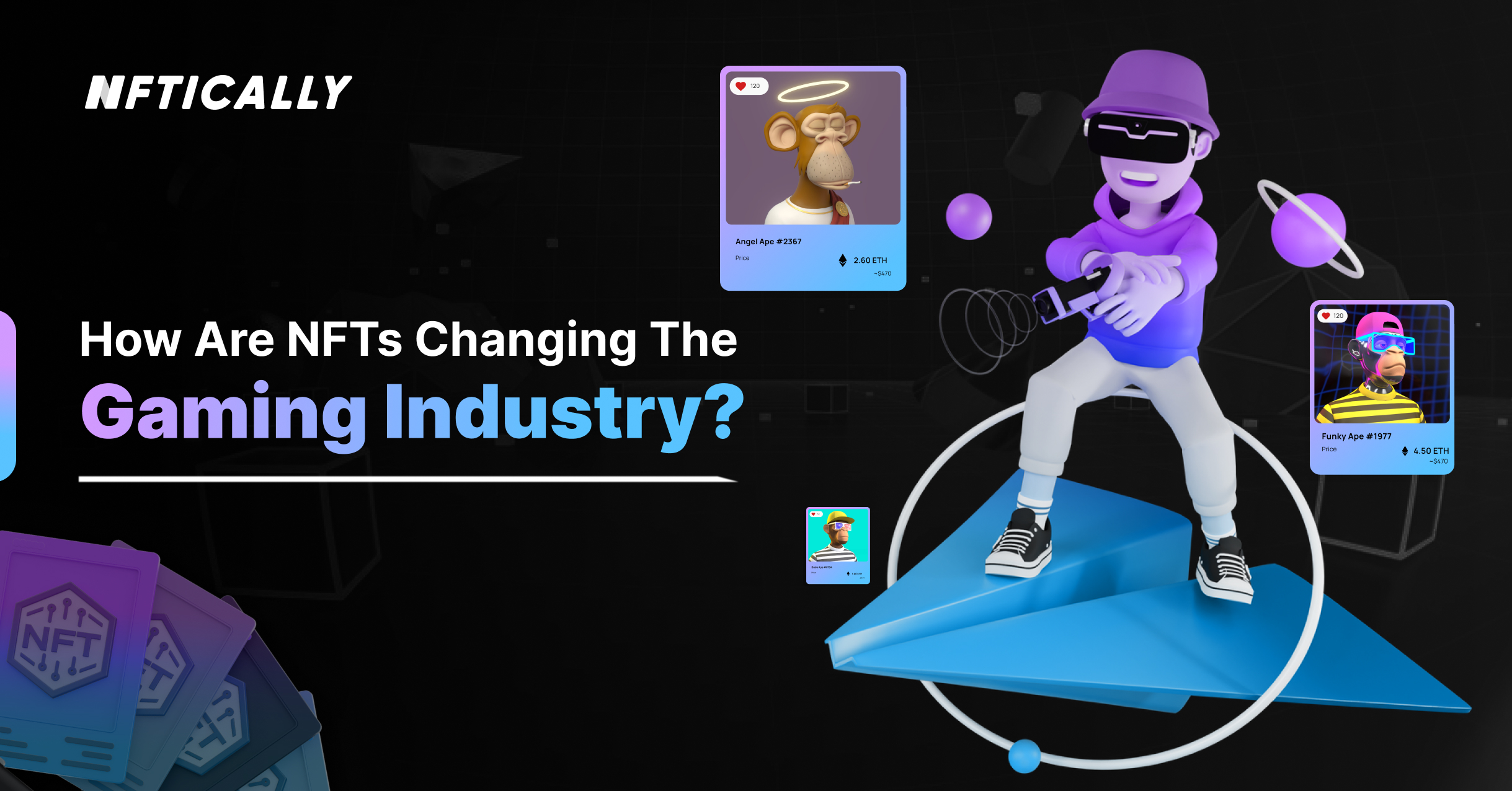- Web 3.0
- July 14, 2022
Reimagining The Future of Education With Web 3.0

Recently, the notion of Web 3.0 and Web 2.0 in educational institutions has become popular and recognizable in the education sector.
The ‘semantic web,’ ‘3D web,’ or spatial web’ are all used to describe Web 3.0. Web 3 may use technology to enhance content and offer new ways to connect with the world around us.
The semantic web makes finding information more accessible. Your interests and behaviors, not keywords, decide channel content.
Web 3.0 improves prior versions
- The Web 1.0 – ‘Read-only‘ – Users can read and search content on a website but cannot exchange or engage with it.
- The Web 2.0 – ‘Read-write’ – In addition to blogs and wikis, it offers a variety of social networking capabilities. Instead, it emphasizes its potential to unite individuals, disseminate information, and open channels of connection. It encourages cooperation and collaborative learning.
Webs 1.0 and 2.0 are unorganized and unstructured, making it hard to access useful information. Web 3.0 should fix these concerns.
Following Blake-Plock, Web development begins with creating a semantic web. Contextualization is a challenging task for computers. However, there is no reason they could not be. When using the semantic web, instead of looking for a term or a category, we may converse with another person, albeit one with the computing power of the whole world’s connected computers.
Semantic intelligent computing meets the physical environment in the second phase. In today’s technology, we can observe this. Using Google Goggles, you can scan the natural world and instantly compare it to anything on the internet. Everything from eyeglasses that connect to the internet to smart clothing that monitors a patient’s heart rate or blood pressure is on the table.
How will Web 3.0 look?
Listed below are some of the most important advancements that will significantly impact how consumers search for information.
- The AI (Artificial intelligence) – Virtual worlds and augmented reality let users engage with their environment, and search results go beyond the text. Users may use interfaces like smart glasses and speech to interact with a hybrid digital-physical world.
- Personalization – Users input their preferences and interests, so the computer will tailor its responses to meet those needs. In addition, user profiles will serve as a virtual representation of themselves and their online hobbies and passions.
- The IoT (Internet of Things) – Everyday objects will be linked to the internet as part of the “internet of things.” Things like printers, office equipment, and automobiles all have sensors connected to the internet. As a result, users can access and control their data from almost any location.
- Virtualization -Augmented reality and virtual worlds enable users to engage with their environment, and search results do not confine to text. Users may utilize smart glasses and voice to interact with a blended digital and physical world.
- Decentralized Computing – It is no longer limited to a few servers that deliver content in Web 3.0. As a result, computational power is distributed across many servers instead. This kind of technology is a blockchain, which disseminates data across several computers and other devices. Users may preserve data securely without relying on a sole source.
How will Web 3.0 affect edtech?
Tech businesses that host an application on a server practically managed by an outside party always must communicate with school stakeholders. Therefore, there is only one person who can turn all the school’s resources for help.
The school owns the data but can only share it through the hosted application’s feature. Also, since the gadgets used by faculty and students are not contextual in the genuine sense, the output is broad and not user-friendly.
Because of this, it is harder for students to develop their skills in a specific way. Because there are no automated systems for collecting data evidence, teachers must act as administrators.
Web 3.0 will bring about a sea shift in these aspects. An amalgamation of technology and hardware, Web 3.0 for education will be a better, more intelligent gadget utilized by faculty members and students.
This will use semantic architecture to distribute information. Every device, including mobile, tablet, classroom technology, ID card, bus, and fee collection pointers, will operate as knowledge nodes and contain tokens for contributions and cooperation.
Both human and machine inputs are welcome for collecting educational data at the institution. Decentralization of data and the creation of assets on campus machines will be made possible by this method.
Token handshakes and data access tailored to individual users will become commonplace with the arrival of 5G—every node linked to a sea of Blockchain hosts that produce assets and makes searches more user-specific.
Web 3.0 makes it easier and faster to discover information
- Cost-cutting – Internet-enabled equipment will make knowledge more widely available, reducing costs.
- Teaching modifications – Using various tools, instructors can create more challenging tasks that students will find interesting. Teachers will have more time to work one-on-one with students or small groups as their independence grows. Student-created material will replace teacher-created content in the future.
- Learning – As a result, classes will run more smoothly and efficiently. If students have access to the internet, they will be able to study at any time and from anywhere.
- Knowledge – Search engines will generate reports from many sources. Besides summarizing what is covered in the news, it will also highlight other points of view and provide links to more information on the subject matter.
- Smart queries – May personalize search results to the user’s specific needs, which reduces annoyance and increases efficiency: search engines index resources, movies, blogs, and more in the future.
- Personal learning network – Personal learning agents will only report information relevant to learners’ objectives. This will send relevant data to you, depending on where you are.
- Personal academic administration – Semantic web descriptions of courses and degrees should make it easier for students to transfer credits and choose colleges that will provide them with the information they want. However, online learning and on-demand learning are becoming more widespread. People can work together, even spread out across the globe. Permission is not required for educational information to be repurposed and repurposed.
Conclusion
Despite Web 3.0’s promise to make it easier for people to locate information and engage with it, how will this affect students’ ability to study and interpret data?
We will have to wait and see how Web 3.0 affects kids. Still, we can begin analyzing its effects now with the help of larger organizations like the United Nations, governments, and other relevant parties to get a better picture of the future of education.
Blogs on the NFTICALLY website cover a wide range of subjects. Before anything else, check out our Frequently Asked Questions page or join one of our Discord or Telegram channels for immediate assistance with any NFT-related questions.
Related Posts

How is AI changing Web3?
Are you ready to embark on a thrilling journey into the future of the Internet? Picture a decentralized web, where AI and blockchain converge to redefine how we interact with digital realms. Imagine AI-driven avatars…
- August 1, 2023

How are NFTs changing the gaming industry?
The advent of Web3, which encompasses blockchains, cryptocurrencies, and NFTs, is transforming the gaming industry. This has led to the emergence of NFT games, which have drawn a significant number of active wallets in 2022….
- May 11, 2023
Recent Posts
- Revolutionizing AI Clones: Sunny Leone Teams Up with Kamoto.AI for an Unprecedented Debut
- The Evolving Landscape of NFTs: A Glimpse into 2024
- NFT Trends to Shape 2024: A Deep Dive into the Future of Digital Assets
- The Gaming Revolution: NFTs Level Up the Player Experience
- NFTs and Intellectual Property Rights: Navigating Legal and Ethical Challenges
Recent Comments
Archives
- January 2024
- December 2023
- November 2023
- October 2023
- September 2023
- August 2023
- July 2023
- June 2023
- May 2023
- April 2023
- March 2023
- February 2023
- January 2023
- December 2022
- November 2022
- October 2022
- September 2022
- August 2022
- July 2022
- June 2022
- May 2022
- April 2022
- March 2022
- February 2022
- January 2022
- December 2021
- November 2021
- October 2021
- September 2021
- August 2021
- July 2021
Categories
- $ECOM
- 3D NFTs
- AI Characters
- Airdrpos
- Bitcoin
- Blockchain
- Blockchain Technology
- Buy NFTs
- Buying
- Crypto Collectibles
- Crypto Wallet
- Cryptocurrency
- Cryto Mining
- Digital Art
- Digital Assets
- Ethereum
- FAQs
- Features
- Generative Art Nfts
- ICO
- Invest in NFT
- Learn
- Metavatars
- Metaverse
- Minting
- NFT
- NFT 2.0
- NFT Art
- NFT Art Finance
- Nft auction
- NFT Communities
- NFT Crypto
- NFT crypto art
- NFT Drops
- NFT Games
- NFT gaming
- NFT Marketplace
- NFT Memes
- nft project
- NFT Royalties
- NFT Staking
- nft stocks
- NFT Store
- NFT Taxes
- NFT Trading Cards
- NFT Wallet
- NFTICALLY
- NFTs
- Non fungible tokens
- Non Fungile Tokens
- Ordinal NFTs
- Physical Assets
- Press Release
- Selling
- Solution
- Stablecoins
- Store
- Tensor Nfts
- Top Cryptocurrencies
- Uncategorized
- Web 2.0
- Web 3.0
- white label nft marketplace

